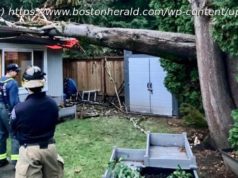The Chicago Police Department’s Strategic Decision Support Centers are a key force driving down violent crime, says LAPD expert hired by city.
Sean Malinowski was torn between two cities last year: chief of staff to Los Angeles police Chief Charlie Beck and $250-an-hour consultant to the Chicago Police Department, helping create new, high-tech crime-fighting centers.
“I used all of my vacation time and days off to do this,” Malinowski says. “My family time suffered. I’m a little worn out by it.”
Invited to Chicago by Supt. Eddie Johnson to lend his expertise after the city suffered one of its bloodiest years in decades in 2016, Malinowski was hired under a $1.1 million contract between the city and University of Chicago. The university’s job: to help build and operate Strategic Decision Support Centers, where cops and civilian analysts monitor gunshot detectors, surveillance cameras and other data to pinpoint where crimes occur and where they might happen next.
In essence, Malinowski’s job was to show the Chicago department how to use its own technology to fight crime, L.A.-style.
He talks less like a cop than an academic, which he also is. Malinowski is a former Fulbright scholar with a Ph. D. in public administration. He’s soft-spoken, wonky and mostly avoids the spotlight, according to people who know him.
He surprised some when he turned down the perk of being chauffeured around Chicago by a cop. Instead, he’d arrive at police stations in a ride-share car.
“As police departments, we’re pressed for resources,” he says. “It didn’t seem right for someone to drive me around. I don’t think there’s a problem with taking an Uber to work.”
Malinowski oversaw the opening of the police department’s support centers in the Englewood and Harrison districts in February 2017. Four other districts — Gresham, Deering, Ogden and Austin — got the centers later in the year. Six more are supposed to open by the end of this year.
As the centers opened, the numbers of violent crimes fell. Shootings in Englewood dropped 35 percent in 2017. Murders declined by 15 percent across Chicago.
“People will say this was just a momentary blip, but I don’t think so,” Malinowski says. “Something happened.”
About a decade ago, when he was a lieutenant in the Los Angeles Police Department, Malinowski adopted predictive analysis as a way to prevent shootings. He was inspired by the work of George Mohler, a UCLA mathematician. Mohler thought cops could forecast crime like seismologists forecast earthquake aftershocks.
The number of killings in Los Angeles has plummeted since the police there began using predictive analysis. Over the past eight years, the city has seen fewer than 300 murders a year — nearly four times fewer than in the 1990s. In contrast, Chicago had 769 murders in 2016.
Malinowski had visited Chicago in September 2016 to assist with a Justice Department study of the city’s crime problems. He started work as a consultant on the support centers in late 2016. He’s been paid $223,750 for his advisory work, on top of his six-figure LAPD salary.
The Chicago Police Department’s data nerve center in the Englewood district.| James Foster / Sun-Times
Malinowski says he thought the Chicago Police Department’s technology was first-rate but wasn’t being used to maximum effect.
He got the first two centers running in about a month — lightning speed for a major city project.
He says he listened to what rank-and-file cops said they needed in order to get their “buy in.” As a result, he got more patrol cars for officers and even got hot water restored to a women’s bathroom in the Harrison district.
Meantime, civilian analysts from the University of Chicago were flown to Los Angeles to learn how the situation rooms work there. When they returned, they worked alongside Chicago cops.
The support centers are $1.5 million rooms inside police stations. Information from ShotSpotter gunshot detectors and surveillance cameras is displayed on large monitors. Beat officers have real-time access to the information via cellphone and in-car computers, alerting them to the spot where a shooting occurred.
Cops on the street began realizing the nerve centers could tell them what was happening at a crime scene before they rolled up in their cars — or that a shooting had just occurred at an intersection blocks away from them.
As part of the new program, district commanders also encouraged officers to do more community outreach to get citizens involved after decades of mistrust, Malinowski says.
Ald. Chris Taliaferro (29th) is familiar with the support centers. There’s one in the Austin district in his ward. Another is planned for the Grand Central district, also in his ward. He says he sees the value of the Strategic Decision Support Centers but thinks they’re only part of what the city should be doing on the crime front.
“ShotSpotter will reduce the violence in the city,” Taliaferro says, “but it’s still not a proactive measure.”
Ald. Chris Taliaferro (29th).| Sun-Times files
Taliaferro, a retired Chicago cop, says the city needs a stronger community-policing program, pointing out that the rate of murders that get solved is far lower now than it was in the early 2000s, when the Chicago Alternative Policing Strategy was a bigger priority.
Back then, beat officers from every shift were required to attend CAPS meetings, but they no longer have to, Taliaferro says.
“As a police officer, I bought into CAPS,” he says. “There is nothing more dynamic than the police-community relationship.”
Still, U. of C. professor Jens Ludwig says he’s seen evidence the support centers are working to drive down violent crime. Speaking recently before the City Club of Chicago, he said researchers have linked a decline in shootings last year to the “data-driven police management in some of the most dangerous neighborhoods in the city of Chicago,” ruling out other factors.
What was unusual about the drop in violent crime in Englewood, in particular, was that police manpower and overall arrests didn’t jump as the shootings went down, according to Ludwig.
“Police are not reducing gun violence just by arresting more people and exacerbating the other criminal-justice problem we’re all talking about in Chicago, which is incarceration,” he said.
But a subset of overall arrests — those involving gun-related cases — did rise, according to Ludwig.
University of Chicago professor Jens Ludwig speaks on Jan. 29 at the City Club of Chicago.| Max Herman / Sun-Times
He said the support centers appear to have done better at deploying cops to where they have a greater chance of recovering guns.
Ludwig displayed maps of where officers were concentrated in the Englewood district based on GPS “pings” from their cars. The heaviest concentrations last year were along the main thoroughfares, where most of the violence was occurring. In 2016, cops were spread throughout the district, the maps showed.
So far this year, through Feb. 4, the number of what the police call “shooting incidents” — which can include multiple victims — has fallen by 65 percent in the Englewood district compared with the same period last year.
Home
United States
USA — mix Los Angeles-style policing driving down Chicago shootings, city's experts say






